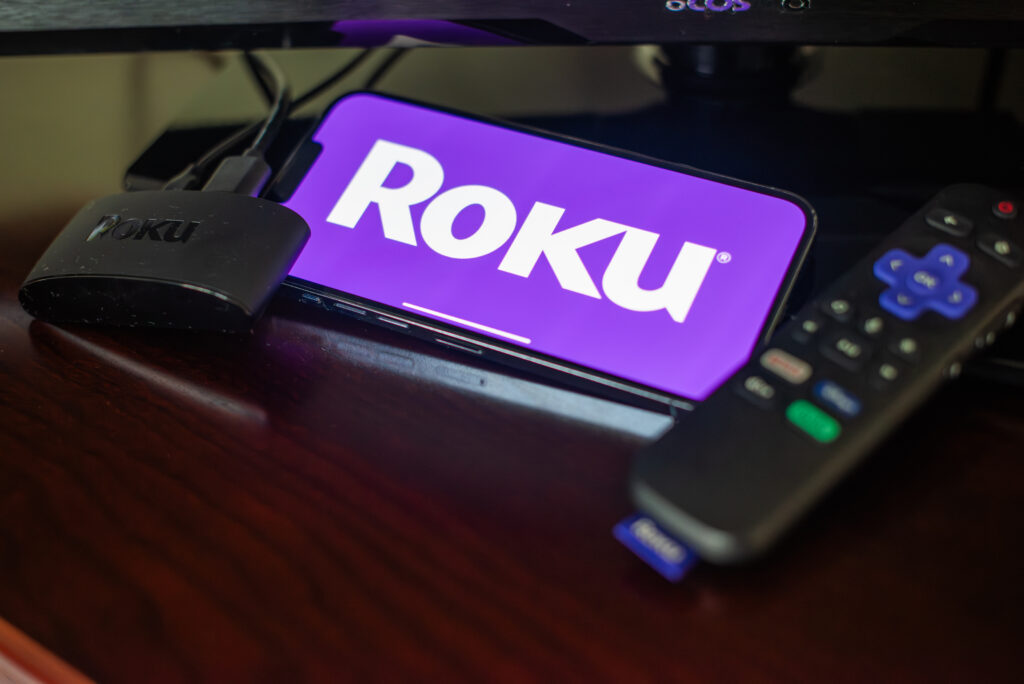[ad_1]
Investors are hoping for a Netflix-like ending for Roku’s story, resulting in staggering wealth from today’s stock price.
Netflix, now one of the world’s largest technology companies, is the gold standard of the streaming industry. Although many competitors have entered the fray, Roku (ROKU 2.11%) remains one of the field’s oldest players, with ties to Netflix’s early years in streaming.
Roku lucratively rewarded shareholders from its initial public offering (IPO) through 2021 but has lost 85% of its value since peaking in the 2021 stock market bubble. Could buying the stock position investors for a remarkable comeback story and set them up for life? Or is the stock’s decline a permanent loss, a warning sign to prospective investors to stay away?
Here is what you need to know.
Roku’s gatekeeper role faces competition at every turn
Most consumers recognize Roku for its streaming dongles, speakers, and Roku-branded streaming televisions. However, Roku sells its hardware at a loss, which investors should view as bait to get users into its ecosystem. Roku’s core business is its software platform, which you use whenever you stream content on a Roku device, Roku TV, or third-party TV using Roku’s licensed operating system. Roku generates platform revenue from ads and fees to third-party partners (such as streaming services).
It’s a little complex, but the simple point is this: Roku wants to be the gatekeeper to the streaming viewer. It intends to profit from streaming no matter what you watch, as long as it’s on a Roku device.
This middle role of sorts comes with competition from both sides. Roku competes with other TV manufacturers, and its in-house streaming service, The Roku Channel, competes for eyeballs with other streaming services. For example, Roku and (HBO) Max partnered so Roku users can access Max. However, there’s underlying competition since Max and Roku would prefer you watch their respective streaming service versus the other.
I suspect the market has come to fear this competitive dynamic, which might help explain why Roku stock trades near its lowest valuation since going public (more on that in a minute).
But what’s indisputable is that Roku has continued to grow; its user base reached 85.5 million households in the third quarter. It’s not as large as the leading streaming services — Netflix has almost 283 million paid subscribers — but it’s large enough to create leverage in that streamers feel the need to work with Roku.
Investors are waiting for lift-off
Roku is arguably in its best competitive position ever thanks to its increasingly larger user base. The company is not generally accepted accounting principles (GAAP) profitable yet, but it generates free cash flow and has $2.1 billion in cash and zero debt on its balance sheet. Yet, the stock trades near its lowest price-to-sales (P/S) ratio as a public company, just 2.5 times revenue.
It might sound odd to say out loud, but Wall Street seems to have trust issues with Roku’s business model. For example, investors sold off Roku stock after the company’s Q3 earnings due in part to management’s announcement that it would stop reporting its number of streaming households or its average revenue per user (ARPU). However, management’s explanation made total sense. The company’s international expansion is adding streaming users that Roku hasn’t yet monetized, which skews the data. Instead, Roku will focus on streaming hours (measuring platform engagement) and free cash flow (a key financial metric that drives business value).
Roku’s stock recently dipped again after adtech company The Trade Desk announced it would launch a smart TV operating software platform in 2025 that would directly compete with Roku’s. It’s worth remembering that Roku already has 85.5 million households using it versus zero for The Trade Desk. Roku is the top-selling TV operating system in North America, and it has been leading the U.S. market for more than five years. It seems questionable at best that TV manufacturers, especially those already using Roku’s TV operating system, will flee a known winner for an unproven newcomer.
It seems Wall Street doesn’t want to give Roku any benefit of the doubt, and that’s weighing on the stock today.
Is this the opportunity?
Analysts estimate Roku will finish 2024 at just over $4 billion in revenue, a 14% increase over last year. Estimates are $4.6 billion for 2025, implying 15% year-over-year growth. So, Roku is still growing solidly but probably not fast enough to turn modest sums into life-changing wealth anytime soon.
But Roku’s valuation is a wildcard. The stock’s depressed valuation is only a fraction of Netflix’s, which trades at a P/S ratio over 10. Should Roku prove itself enough to earn a higher valuation, double-digit revenue growth and valuation expansion together might create the needle-moving returns investors seek. Even trading at half of Netflix’s P/S ratio would require Roku’s share price to double from its current levels.
Will that happen? It’s anyone’s guess. Roku has proven itself enough that it’s an intriguing long-term investment idea with market-beating potential if the business can turn a profit and maintain its growth momentum. Going too far beyond that is probably reaching, so those hoping for a rags-to-riches story might look elsewhere.
Justin Pope has positions in Roku. The Motley Fool has positions in and recommends Netflix, Roku, and The Trade Desk. The Motley Fool has a disclosure policy.
[ad_2]
Source link

